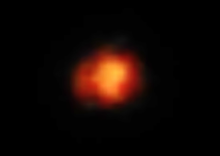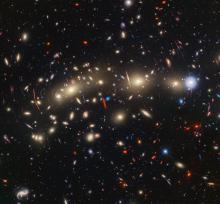Listen to today's episode of StarDate on the web the same day it airs in high-quality streaming audio without any extra ads or announcements. Choose a $8 one-month pass, or listen every day for a year for just $30.
You are here
Viewing Spot
For a space telescope, Earth orbit isn’t a great viewing spot. As a craft passes in and out of Earth’s shadow, it changes temperature, which can mess with its instruments. Earth itself can shine into the telescope, spoiling the view. And activity on the Sun can cause Earth’s atmosphere to expand, increasing drag and shortening the ’scope’s lifetime.
So in recent decades, several space telescopes have been sent to a spot almost a million miles away. It provides an open view of the heavens, steady temperatures, and easy contact with Earth.
The spot is known as L2. It’s one of five “Lagrange points” — places where the gravity of Earth and Sun are balanced. They’re named for Joseph-Louis Lagrange, a mathematician and astronomer who discovered them 250 years ago.
L2 is on the opposite side of Earth from the Sun, at one percent of the Sun’s distance. The point itself isn’t stable. But a craft can orbit L2, where it needs little fuel to stay in place.
Some pioneering telescopes have studied the universe from L2. W-MAP studied the afterglow of the Big Bang — work that earned its creators a Nobel Prize. And several craft are there now, including Gaia, which is mapping more than a billion stars, and James Webb Space Telescope, which arrived early this year. Engineers are still tweaking Webb to get it ready to look for early stars and galaxies, study exoplanets and stellar nurseries, and more — from a million miles away.
Script by Damond Benningfield





